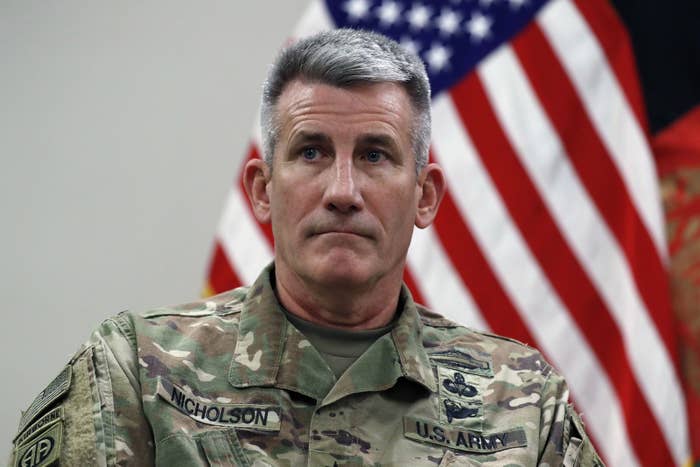
The US wars in Afghanistan, Iraq, Syria and Pakistan have cost the average American taxpayer $23,386 since 2001, according to a new analysis. The figure is triple the estimate put forth by the Pentagon.
The Pentagon’s most recent estimate, released in June this year, said the costs have amounted to $1.43 trillion over the last 16 years. That figure is closer to $5.6 trillion if you take into account the ongoing medical care for veterans of those conflicts, the war-related costs of the State and Homeland Security departments, as well as other costs that don’t fall under the Defense Department, a report released this week by the Costs of War Project at Brown University’s Watson Center shows.
“When wars end, the costs don’t stop, they grow,” Neta Crawford, the study’s author and co-director of the Costs of War project, told BuzzFeed News. “And these wars are being paid for on a credit card. That means that the next generation will have to pay for them.”
But the wars are not ending.
The staggering costs are going to continue to multiply after the Trump administration’s decision to increase the number of US troops in Afghanistan by 3,900. They will be joining the 11,000 already there to train and assist Afghan forces as they try to reverse the setbacks against the Taliban in recent years.
Under Trump’s budget for the 2018 fiscal year, direct US spending on the war in Afghanistan will top $840 billion, according to Anthony Cordesman, a military strategy expert at the Center for Strategic and International Studies.

The Brown University report notes that the Pentagon’s estimate is not comprehensive, as “every war costs money before, during and after it occurs — as governments prepare for, wage, and recover from armed conflict by replacing equipment, caring for the wounded and repairing infrastructure destroyed in the fighting.”
When it comes to caring for the US troops who fought in those conflicts, the costs will last decades.
“The fact is we’ve been at war against terrorism since 2001, and 2 million more people have joined the VA who will require care for the next 40 years, which is an obligation that we can’t forget,” Crawford said.
Soldiers and veterans of the post-9/11 conflicts tend to be sicker, returning with higher rates of respiratory and cardiac issues as well as other traumas that may not emerge until years after deployment, according to the report. Three in four of the veterans of those wars are under the age of 45, and their health care needs are going to become more complex and expensive as they age.
Caring for those veterans discharged up to 2013 will cost approximately $836 billion through 2053, according to a similar analysis by Harvard Kennedy School professor Linda Bilmes.
The report is critical of building up troop levels without a clearer counter-terrorism strategy, which is “essentially to defeat all 'radical Islamist' groups militarily,” the report says.
“The more people the US kills, the more seem to join the organizations the US was already fighting, even as new radical groups spring up,” the study says.
As of August, 13 percent of the 407 districts in Afghanistan were under Taliban control or influence, compared with 11 percent in February, according to the Special Inspector General for Afghanistan Reconstruction. Roughly 700,000 more Afghans now live in districts under Taliban control or influence compared to 6 months ago, SIGAR found.
“After 16 years, should the taxpayers of America be satisfied we are in a ‘stalemate’?” Arizona Sen. John McCain asked Defense Secretary Jim Mattis at a hearing last month. “I don’t think so.”
